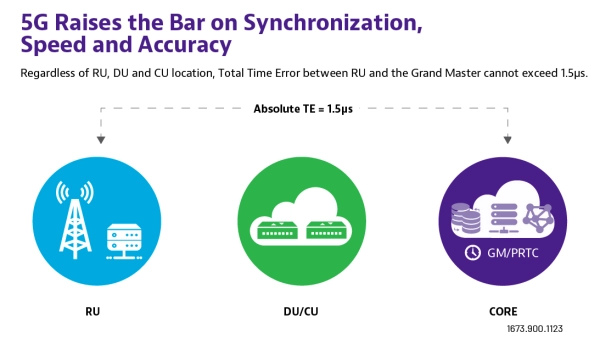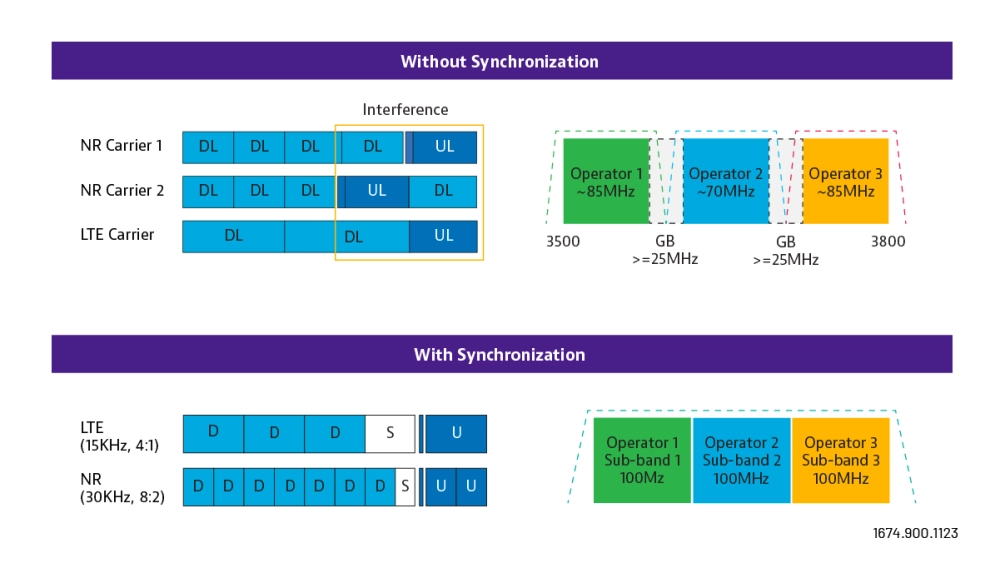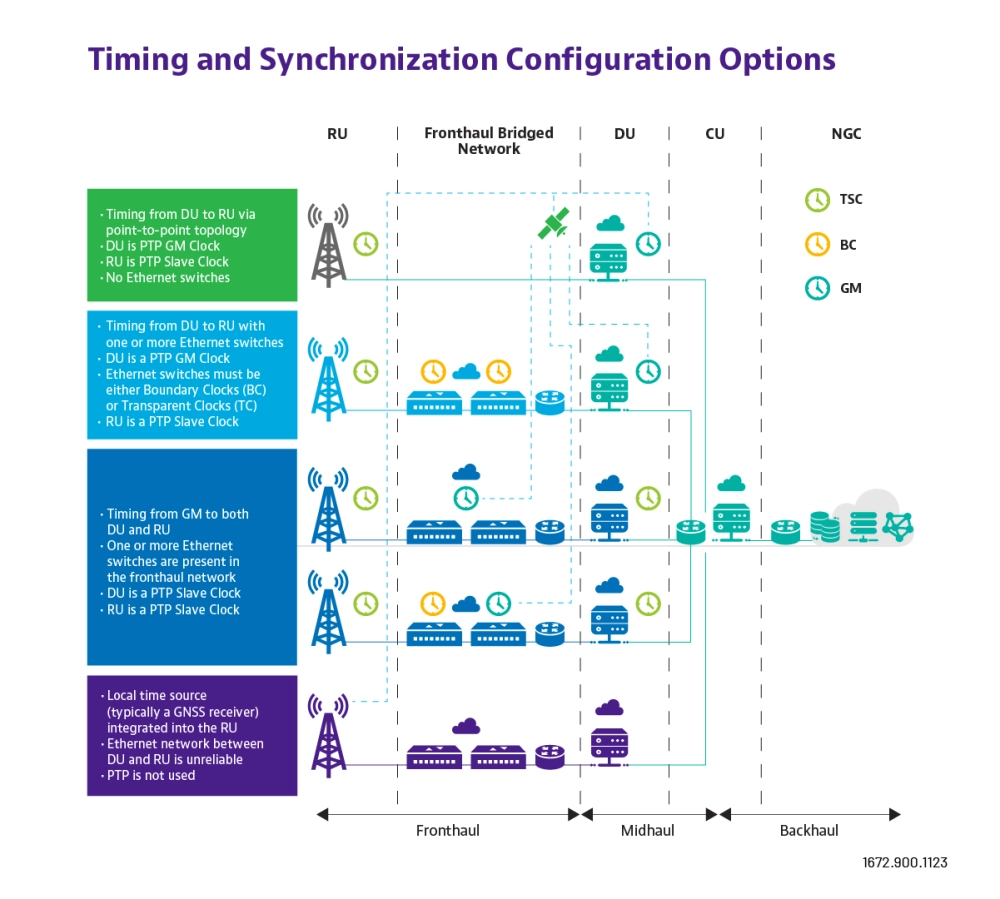5G Synchronization
The VIAVI Synchronization Toolkit includes comprehensive solutions for network installation and maintenance.
Synchronization is crucial for cellular network performance, especially with the challenges posed by 5G and the shift to TDD, which have narrowed synchronization margins. Technologies like packet-based fronthaul, Massive MIMO, and beamforming increase the need for ongoing validation to ensure quality of service.
A Complete Synchronization Tool Kit from VIAVI
The VIAVI Synchronization Toolkit includes comprehensive solutions for network installation and maintenance.
Our field-test device provides fast OTA timing and sync analysis for 5G cell sites, and is the only handheld platform capable of GPS signal verification and error testing to the PTP protocol, ensuring unmatched accuracy. Additional solutions include real-time Xhaul analysis, full-constellation GPS simulation and an ultra-reliable STL timing source, addressing synchronization gaps or deficiencies identified through testing.
Synchronization Challenges
As a Communication Service Provider, you understand how synchronization issues can introduce errors, reduce capacity, and cause interference between radio and UE transmissions, thereby disrupting the customer experience. You must contend with:
- Intercell interference due to incompatible TDD frame formats
- Signal leakage between TDD uplink and downlink transmissions
- Sub-standard GNSS signal quality
- GPS denied or handicapped locations, including indoor/private 5G networks
- Edge Grand Master requirements for O-RAN fronthaul synchronization
- Precise 3GPP timing for distributed MIMO (Multiple-in, Multiple-out) antennas
At VIAVI, our advanced and comprehensive portfolio allows you to address synchronization performance consistently as you:
- Assess GPS signal quality - Our portable network test solutions quantify GPS signal strength from multiple locations while ensuring the appropriate quantity and diversity of visible satellites.
- Ensure system clocks are aligned - By emulating precision time protocol (PTP) endpoints downstream from a grand master clock, we help you verify error limits are not exceeded, interference is minimized, and 5G performance is safeguarded.
- Verify frame and slot formats - With simplified over-the-air test workflows, you can easily validate the 5G-TDD frame and slot formats and cell phase synchronization to prevent intercell interference.
- Verify synchronization of O-RAN networks - We help you meet the stringent requirements for Open Fronthaul, Midhaul and Backhaul synchronization to ensure proper operation of 5G services such as TDD
- Provide a resilient timing source - Satellite time and location (STL) signals from Low Earth Orbit (LEO) provide a reliable timing and synchronization source for GPS denied environments including small cells and indoor venues.
- Provide a precise timing source - Multi-band and Multi-constellation GNSS based 1PPS and PTP time server provides the precise UTC (Universal Time Coordinated) timing at +/- 5ns 95% time to meet the most stringent 5G TAE specifications.
- Simulate GPS signals - Full-constellation GPS simulation provides antenna performance assurance prior to deployment by feeding a synchronization signal directly to the GPS receiver.
In Sync with the Pace of Technology
Synchronization issues must be identified and addressed quickly. This calls for a versatile tool kit with coverage from the lab to the field, along with innovative timing and emulation resources to support GPS denied locations and pre-deployment synchronization assurance testing.
Intelligent 5G network insights, from design to flawless operation and automation. Next generation 5G test solutions
Application Notes
Brochures
Case Studies
Posters
Let Us Help
We’re here to help you get ahead.







